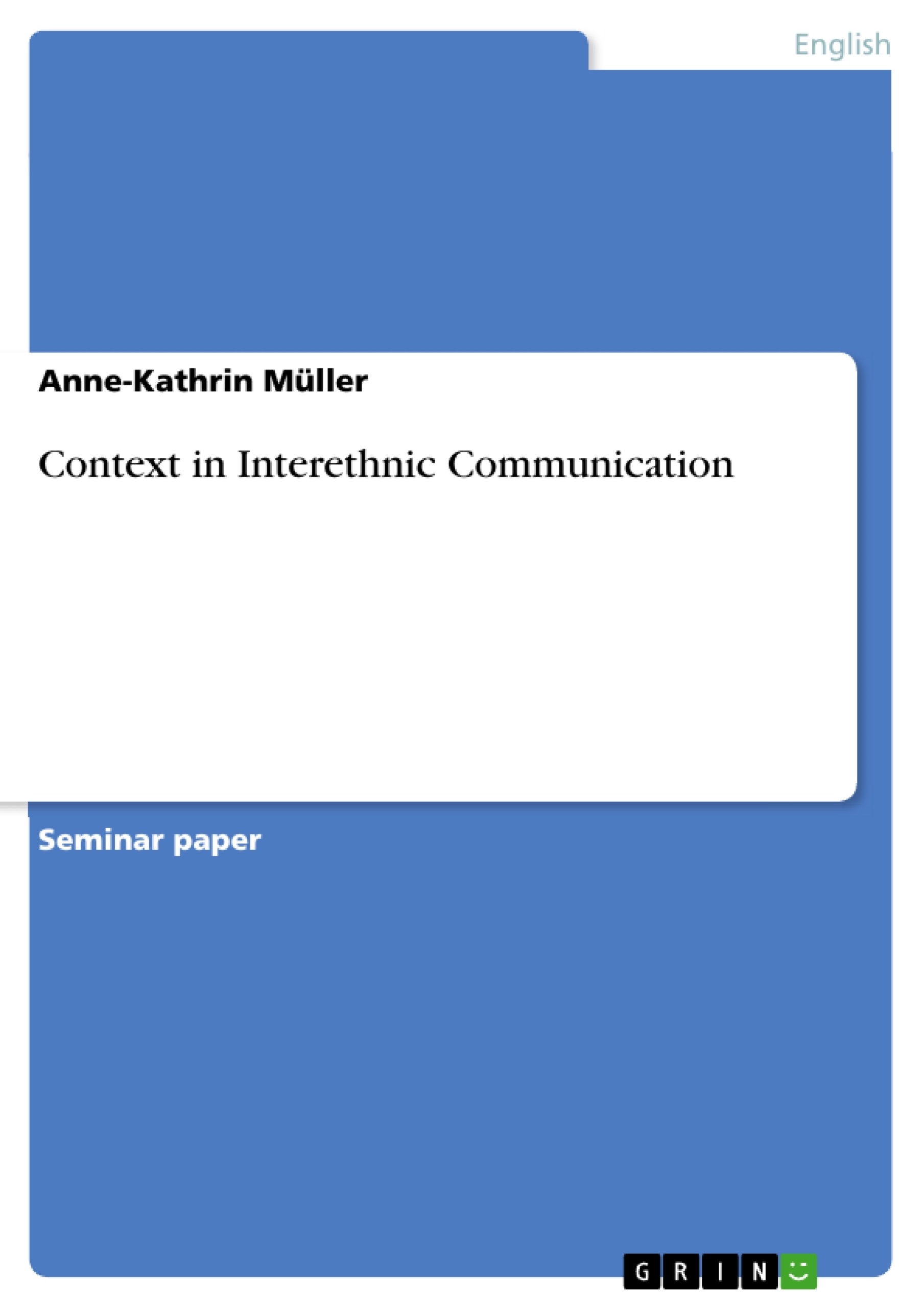Today’s world becomes smaller and smaller because of the development of new transport and technology. It becomes normal to move away from one’s home town e.g. in oder to find employment. Therefore, the need to communicate with people of one’s own culture (family, friends) increases.
Additionally, most people make use of the arising new opportunities and fly to foreign countries where we get into contact with people of other cultures. We try to stay in touch with them because technology allows for it: telphone, email, webcams, and chat make it possible for us to talk to someone e.g. in Australia as if s/he was actually here. It becomes normal for people to learn foreign languages and to communicate with people that belong to another nation in their surrounding aswell as in one’s own surrounding because people come to our country in order to get to know a different people, too. Today, the usage of foreign media is normal for us and exchange does not stop at national borders. We feel that our need to communicate in general becomes greater and greater.
Hence, we have to become sensitive to other people’s cultural and communicative specifics in order to enjoy the international exchange and to understand the other person in the right way. That means that we have to learn about intercultural/interethnic communication.
Three complex building blocks in understanding intercultural communication can be defined and will be analysed in the first chapter: communication, culture and context. As communication and culture are interrelated and as they both interact with context, we first need to look at the former two. Context then serves as the necesseray background against which intercultural communication can be understood.
The development of an understanding of intercultural communication will lead to an overview of problems in interethnic conversations, such as misunderstandings, stereotypes and prejudices, intercultural communication apprehension, and fossiliation. This then serves as a basis for outlining methods of how miscommunication can be solved.
Table of Contents
- Introduction
- Three Components of Interethnic Communication
- Communication
- Culture
- Context
- Problems in Interethnic Communication
- Interactive synchrony
- Content Analysis
- Different Kinds of Problems
- Misunderstandings
- Stereotypes and Prejudices
- Intercultural Communication Apprehension
- Fossiliation
- Managing Intercultural Miscommunication
- Framing
- Perception and Acception
- Repair
- Resumee
Objectives and Key Themes
This term paper aims to provide a comprehensive understanding of intercultural communication, specifically focusing on the challenges and complexities of interethnic conversations. It examines the interplay of communication, culture, and context in shaping the dynamics of intercultural interactions.
- The interconnectedness of communication, culture, and context in intercultural communication.
- Challenges and potential problems arising from intercultural communication, such as misunderstandings, stereotypes, and intercultural communication apprehension.
- Strategies for managing and mitigating intercultural miscommunication, including framing, perception and acceptance, and repair mechanisms.
- The importance of intercultural sensitivity and understanding in today's globalized world.
Chapter Summaries
The introduction highlights the growing importance of intercultural communication in a globalized world, emphasizing the need for sensitivity to cultural and communicative differences. It establishes the three key components of intercultural communication: communication, culture, and context, which will be explored in detail.
The chapter on the three components of interethnic communication delves into the interrelation of communication, culture, and context. It argues that these factors interact to create the backdrop against which intercultural communication unfolds.
The subsequent chapter focuses on problems that can arise in interethnic communication. These include issues related to interactive synchrony, content analysis, and various forms of miscommunication.
The final chapter on managing intercultural miscommunication presents strategies for mitigating and resolving potential issues. It explores concepts such as framing, perception and acceptance, and repair mechanisms, highlighting the importance of active communication and cultural awareness.
Keywords
Intercultural communication, interethnic communication, context, culture, communication, misunderstandings, stereotypes, prejudices, intercultural communication apprehension, fossiliation, framing, perception, acceptance, repair, managing miscommunication.
- Arbeit zitieren
- Anne-Kathrin Müller (Autor:in), 2005, Context in Interethnic Communication, München, GRIN Verlag, https://www.grin.com/document/37213



